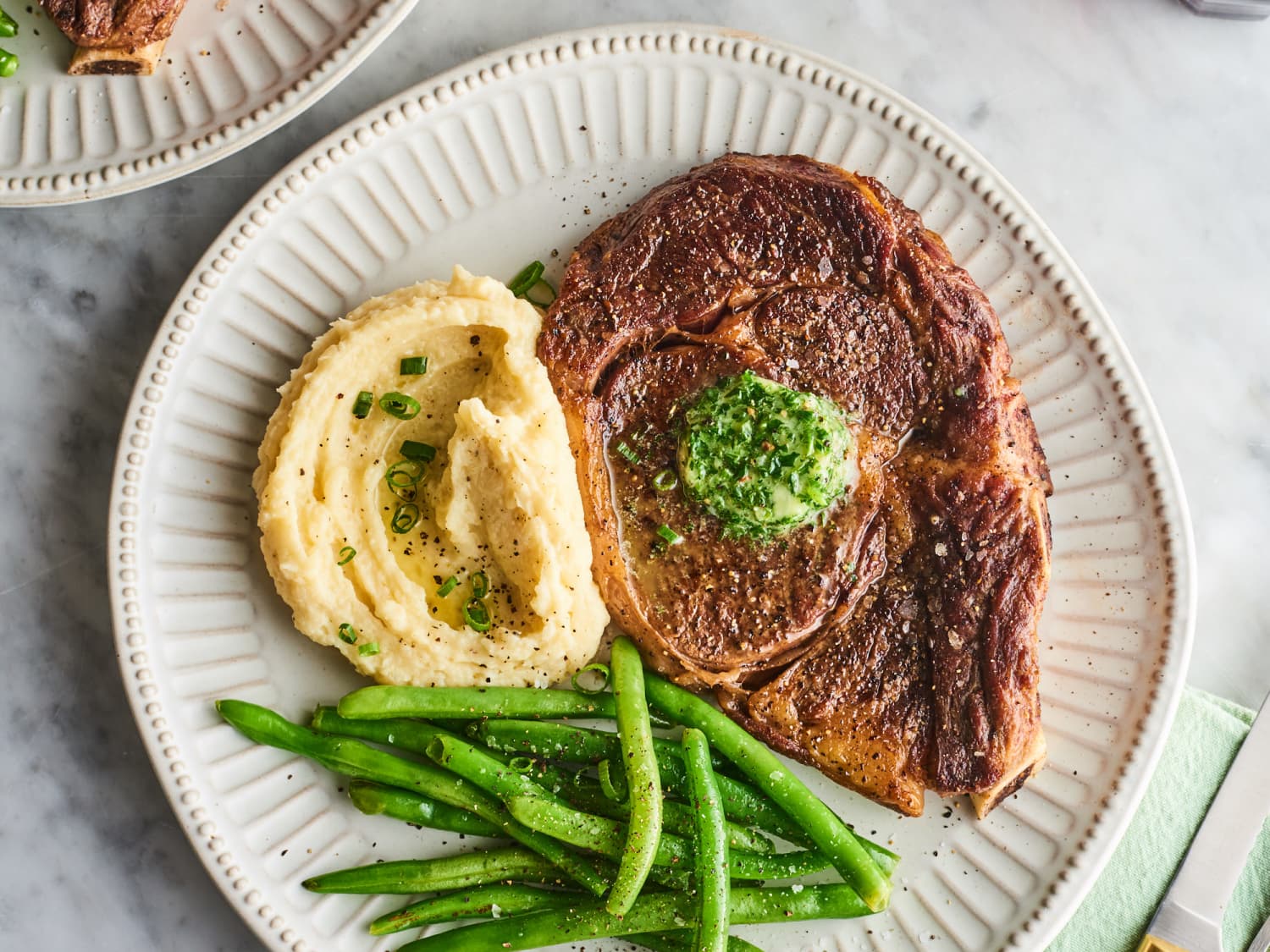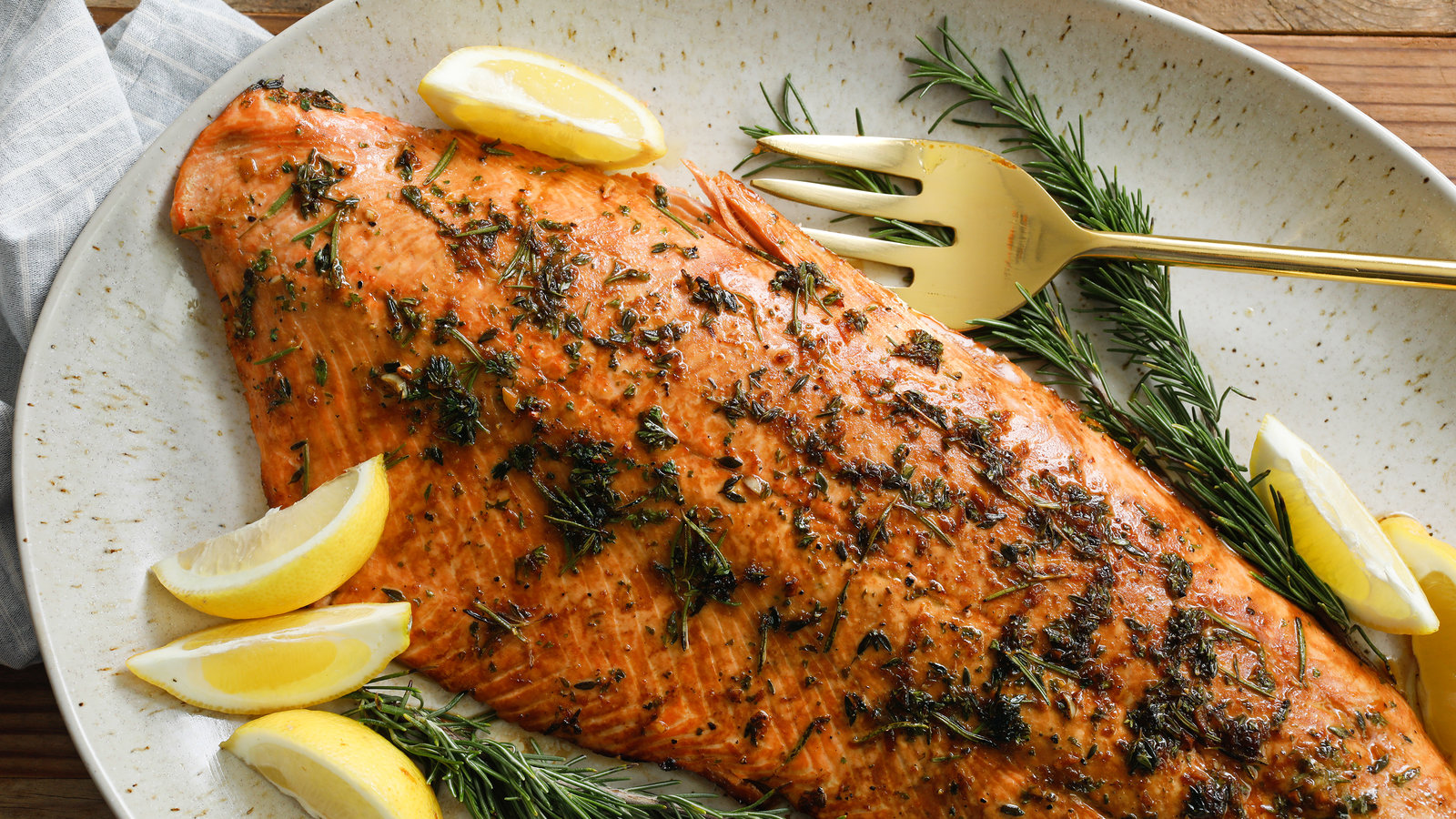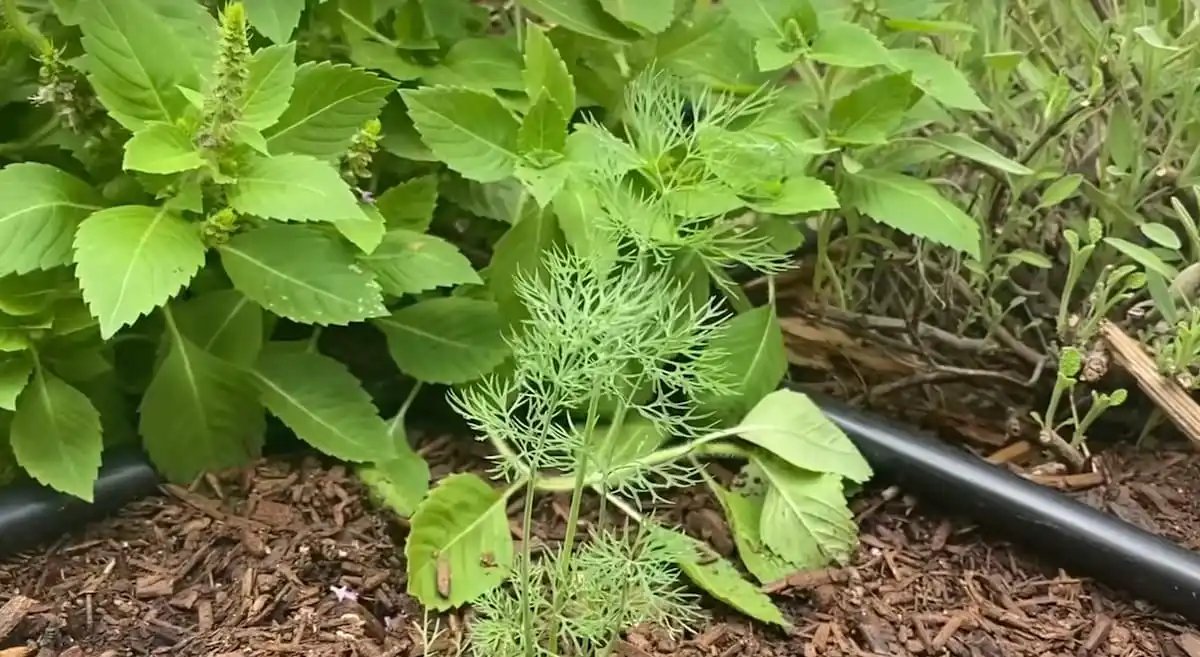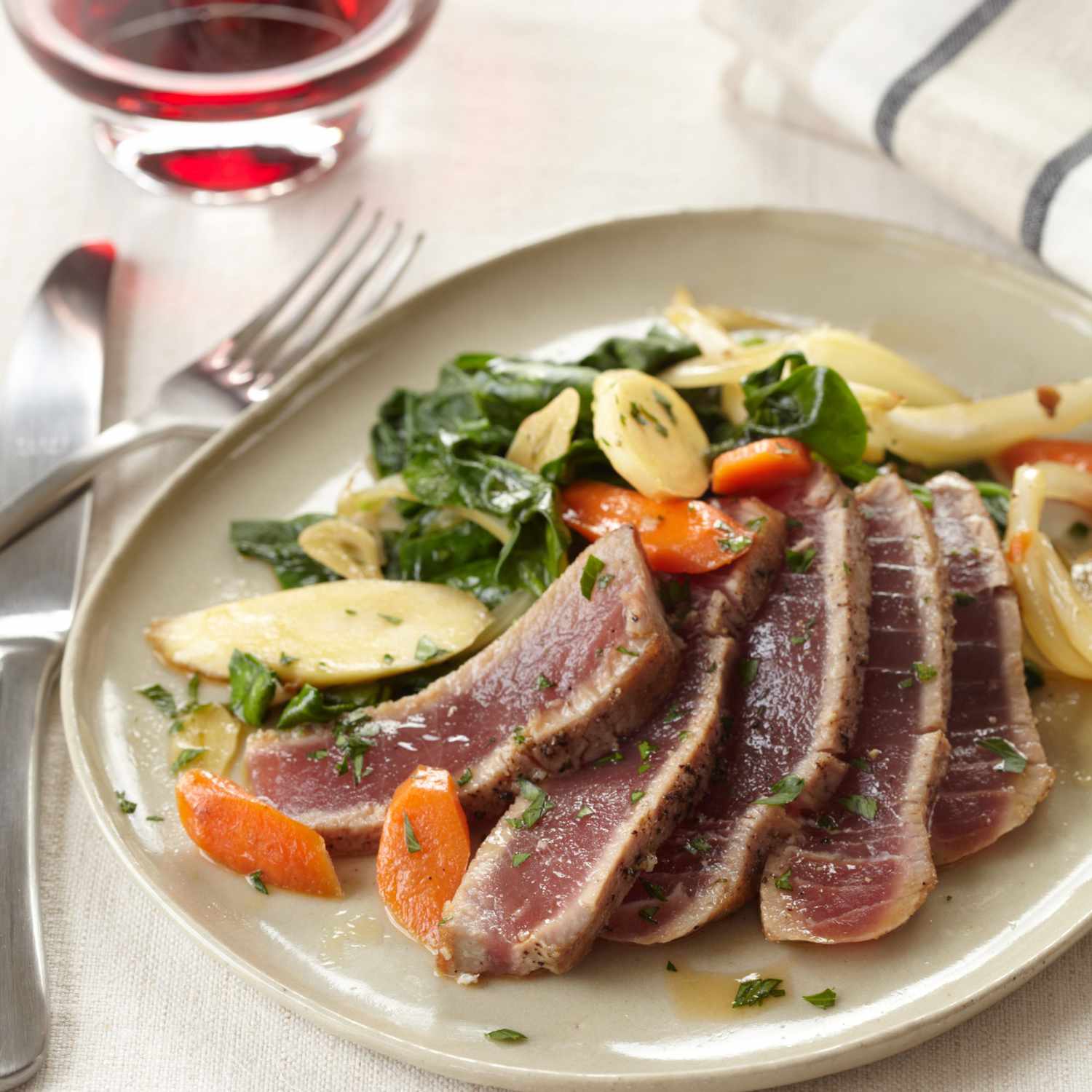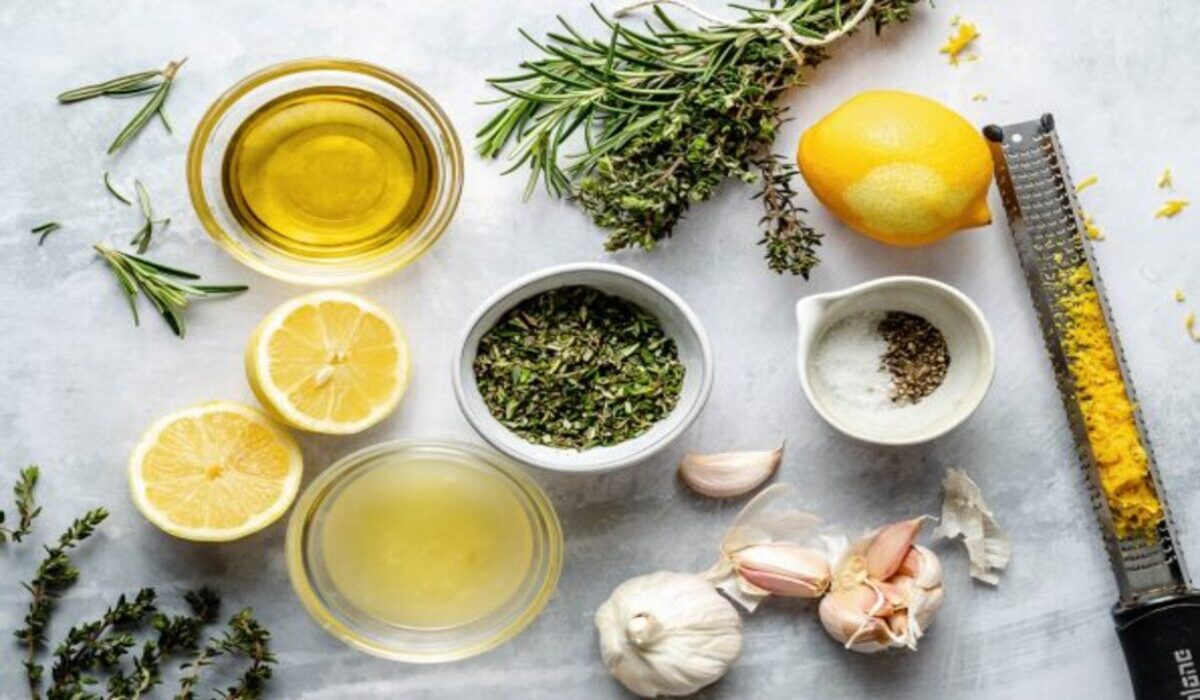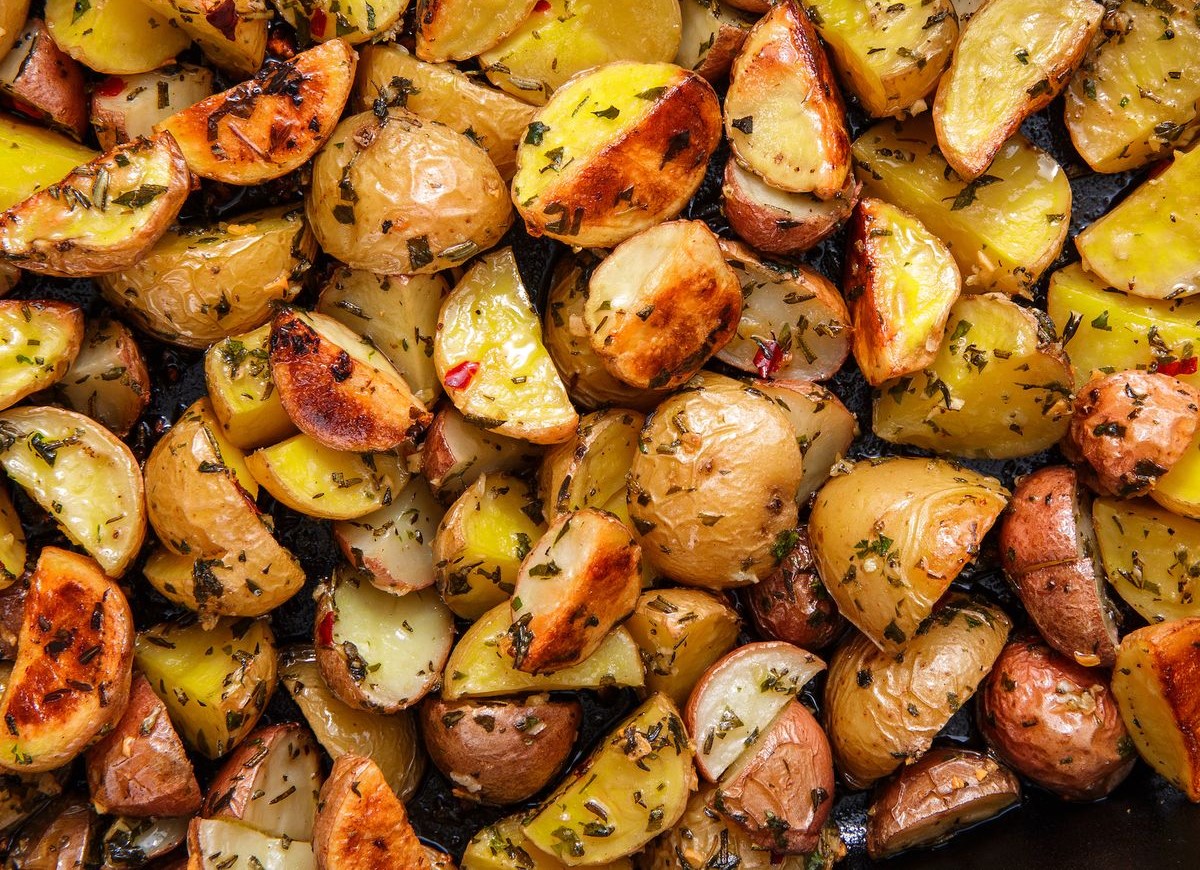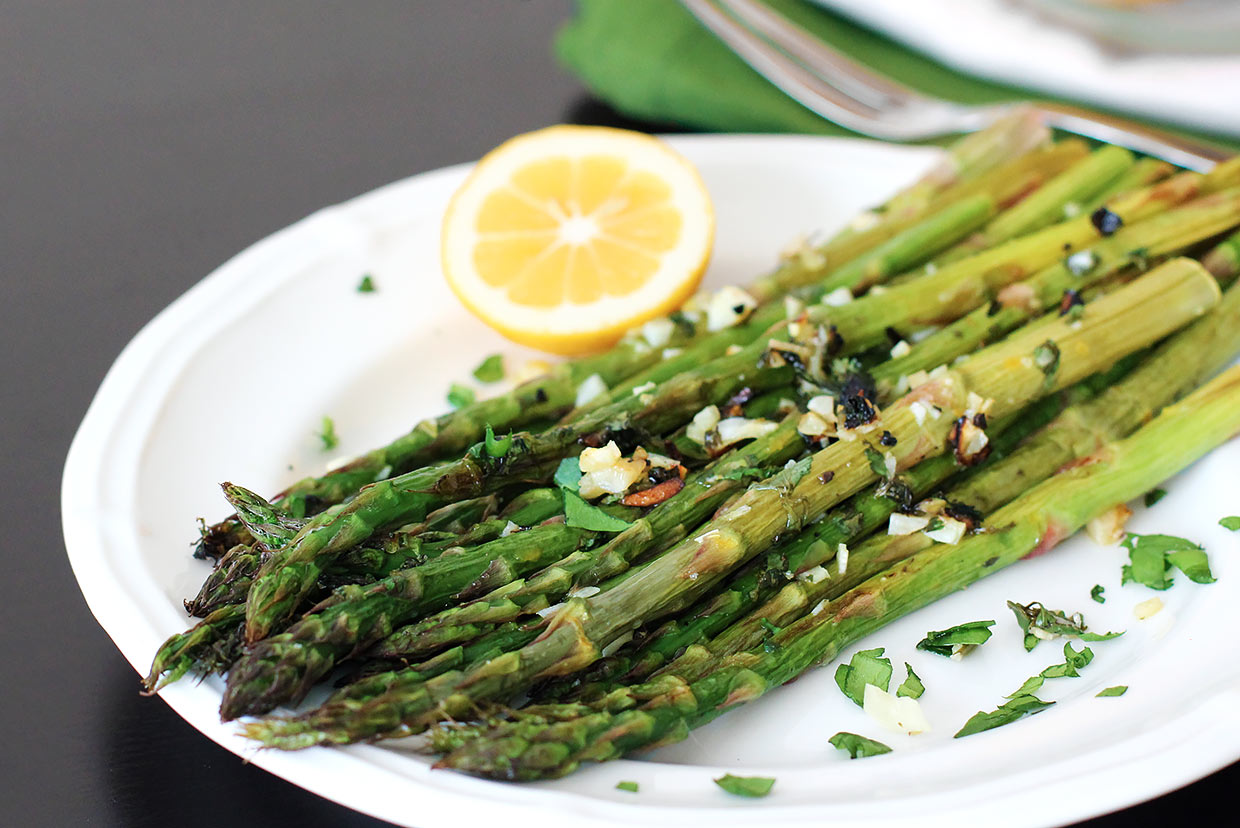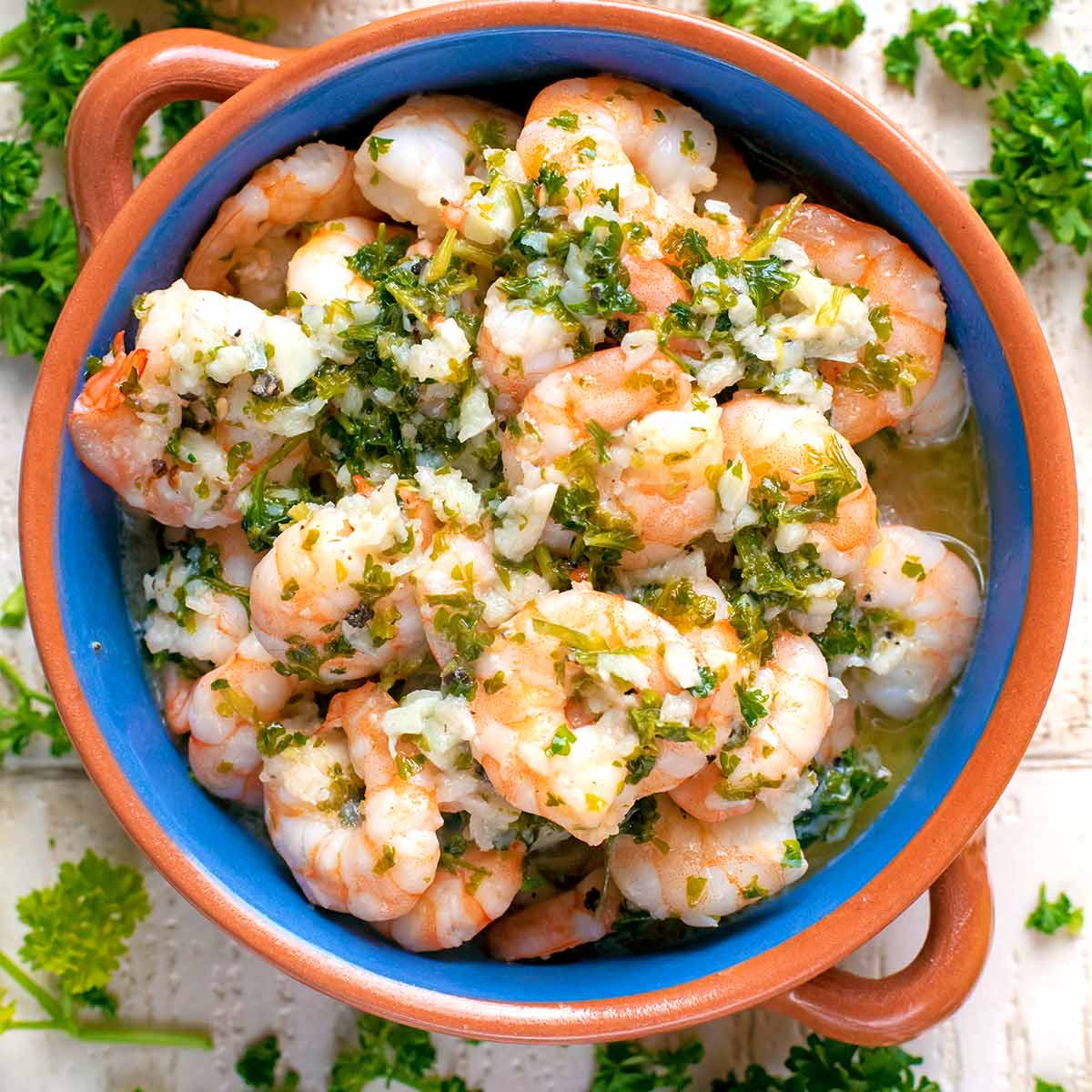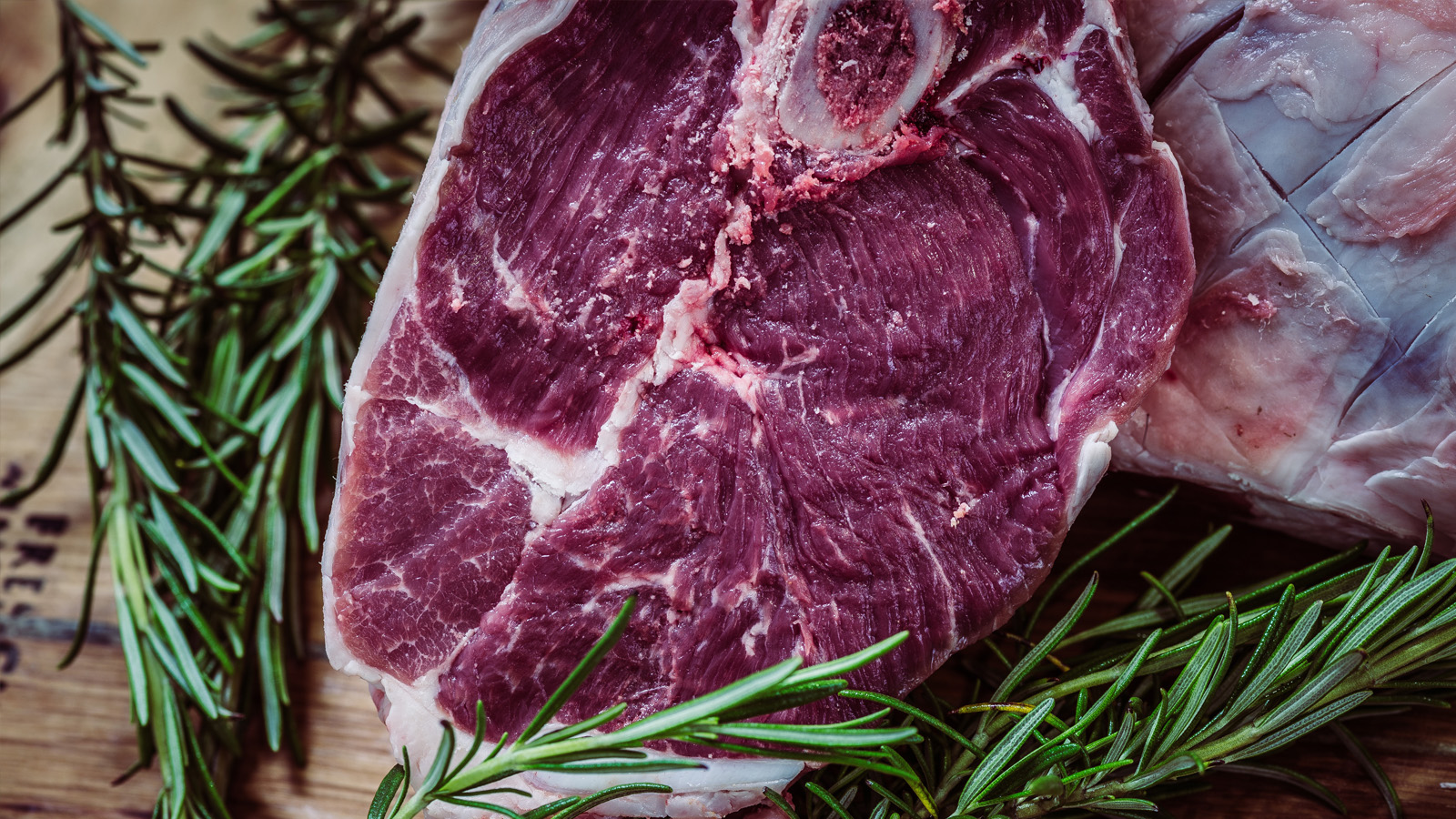Home>Gardening News and Trends>Gardening Trends>What Herbs Go Well With Ham


Gardening Trends
What Herbs Go Well With Ham
Modified: January 22, 2024
Discover the latest gardening trends and find out which herbs perfectly complement your ham dishes. Enhance the flavor of your meals with the right herb pairings.
(Many of the links in this article redirect to a specific reviewed product. Your purchase of these products through affiliate links helps to generate commission for Chicagolandgardening.com, at no extra cost. Learn more)
Table of Contents
Introduction
When it comes to cooking ham, choosing the right herbs can make all the difference in flavor. Whether you’re preparing a holiday feast or simply looking to elevate your weeknight dinner, knowing which herbs pair well with ham can help you create a delicious and memorable dish.
Traditionally, specific herbs have been used to enhance the natural flavors of ham and add depth to its taste. These herbs not only complement the savory and smoky nature of ham but also provide a delightful aroma and a touch of freshness.
In this article, we will explore some of the most popular herbs that go well with ham. From classic choices to unique combinations, you’ll find a variety of herb options to suit your preferences and culinary style. Whether you want to accentuate the richness of the meat or add a burst of herbal notes, read on to discover the perfect herb pairings for your ham dishes.
So, grab your apron and prepare to tantalize your taste buds with these delectable herb-infused ham recipes. Let’s dive into the world of herbs and discover the best flavors to elevate your ham to new heights.
Traditional Herbs for Ham
When it comes to cooking ham, there are a few classic herbs that have stood the test of time and continue to be popular choices for seasoning and flavoring. These traditional herbs pair perfectly with the savory, smoky flavors of ham, enhancing its taste and aroma. Let’s explore some of these time-tested favorites:
- Rosemary: Known for its earthy and pine-like aroma, rosemary is a versatile herb that works wonders with ham. Its robust flavor complements the richness of the meat and adds a hint of freshness. Sprinkle freshly chopped rosemary leaves over the ham before roasting or marinate the ham with rosemary-infused oil for an extra punch of flavor.
- Thyme: With its subtle, lemony notes and slightly minty flavor, thyme is another fantastic herb to pair with ham. Its delicate taste adds a gentle herbaceousness to the meat, enhancing its natural flavors. Use fresh thyme sprigs to stuff the ham or sprinkle dried thyme leaves over the glaze for a delightful aroma and taste.
- Sage: Known for its warm and slightly peppery flavor, sage is a staple herb in many savory dishes, including ham. Its aromatic properties complement the smokiness of the meat and provide a pleasant balance. Create a sage-infused butter to baste the ham while cooking or incorporate chopped sage leaves into the glaze for a burst of herbal goodness.
These traditional herbs have long been associated with ham and are beloved for their ability to enhance its flavor in unique ways. Whether you choose to use one herb or a combination of them, these classics will undoubtedly take your ham to the next level of deliciousness.
Rosemary
Rosemary is an aromatic herb that pairs exceptionally well with ham. Its robust and pine-like flavor adds depth and complexity to the meat, elevating the overall taste of the dish. There are various ways to incorporate rosemary when cooking ham:
- Sprinkling: One of the simplest ways to infuse the flavors of rosemary into your ham is by sprinkling freshly chopped rosemary leaves over the meat before roasting. This allows the herb to meld with the meat as it cooks, releasing its aromatic oils and imparting a delightful fragrance.
- Marinating: Another option is to create a rosemary-infused marinade for your ham. Combine minced rosemary leaves with olive oil, garlic, salt, and pepper to form a flavorful marinade. Allow the ham to marinate in this mixture for a few hours or overnight before cooking. This method ensures that the rosemary permeates the meat, resulting in a harmonious blend of flavors.
- Basting: To add an extra layer of flavor, you can baste the ham with a rosemary-infused butter or oil while it cooks. As the ham absorbs the buttery goodness, the rosemary infuses its essence into the meat, giving it a rich and aromatic taste.
Whether you choose to use rosemary on its own or in combination with other herbs and spices, it is sure to enhance the flavor profile of your ham. Its distinctive taste and fragrance add a touch of sophistication to any ham dish. So, don’t hesitate to incorporate rosemary into your next ham recipe and experience the magic it brings to the table.
Thyme
Thyme is a versatile herb that pairs wonderfully with ham, bringing a subtle and refreshing flavor to the meat. Its delicate, lemony notes and slightly minty taste complement the savory and smoky profile of ham. Here are a few ways to incorporate thyme when preparing your ham:
- Stuffing: Fresh thyme sprigs can be used to stuff the cavity of a whole ham before roasting. As the ham cooks, the heat will release the essential oils from the thyme, infusing the meat with a delightful herbal aroma and taste.
- Seasoning: Whether you’re preparing a glaze or a rub for your ham, dried thyme leaves can be a fantastic addition. Sprinkle the dried thyme on the ham, along with other herbs and spices, to create a harmonious blend of flavors. The aromatic properties of thyme will enhance the overall taste experience.
- Marinade: If you prefer a more intense thyme flavor, consider creating a thyme-infused marinade for the ham. Combine minced thyme leaves with olive oil, garlic, lemon juice, and other desired seasonings. Allow the ham to marinate in this mixture for a few hours or overnight before cooking, allowing the flavors to penetrate the meat.
Thyme’s subtle and lemony flavor adds an herbaceous depth to your ham, providing a pleasant contrast to its salty and rich characteristics. Whether you use fresh or dried thyme, the herb’s refreshing qualities will undoubtedly enhance the overall taste and aroma of your ham dish. So, don’t be afraid to experiment with thyme and discover the delightful flavor combinations it can bring to your ham preparations.
Sage
Sage is a classic herb that adds a warm and slightly peppery flavor to ham, making it a delightful pairing. With its aromatic properties, sage complements the smoky and salty nature of ham, enhancing its overall taste and aroma. Here are a few ways to incorporate sage when cooking ham:
- Basting: Create a sage-infused butter or oil to baste the ham as it cooks. This method allows the flavors of sage to infuse into the meat, resulting in a rich and aromatic taste. As the ham caramelizes, the sage imparts its earthy and slightly spicy notes, adding depth and complexity.
- Glazing: Incorporate chopped sage leaves into your glaze mixture to give your ham a burst of herbal goodness. When combined with sweet elements like honey, brown sugar, or maple syrup, the sage provides a balanced contrast, elevating the flavors of both the ham and the glaze.
- Stuffing: For a more intense sage flavor, you can create a sage-stuffed ham. Gently stuff the ham with fresh sage leaves, allowing their essence to permeate the meat as it cooks. This method imparts a delightful herbal aroma and taste to the entire ham.
Sage’s warm and slightly peppery qualities make it an excellent herb to enhance the flavor profile of ham. Its distinctive taste complements the richness of the meat and adds complexity to your dishes. So, don’t hesitate to incorporate sage into your next ham recipe and experience the wonderful combination of flavors that it brings.
Dijon Mustard and Herbs Blend
The combination of tangy Dijon mustard and fragrant herbs is a flavor powerhouse that can take your ham to the next level. The sharpness of the mustard and the aroma of the herbs work together to create a delicious and zesty blend. Here’s how you can create a Dijon mustard and herbs blend for your ham:
- Blend the Ingredients: In a bowl, combine Dijon mustard with an assortment of herbs such as rosemary, thyme, and sage. You can use either fresh or dried herbs, depending on your preference and availability. Mix them well to ensure that the flavors are evenly distributed throughout the blend.
- Coat the Ham: Using a brush or your hands, generously coat the ham with the Dijon mustard and herbs blend. Make sure to cover the entire surface of the ham for maximum flavor infusion. The mustard acts as a binder, holding the herbs in place while adding a tangy and slightly spicy kick.
- Bake or Grill: Place the coated ham in the oven or on the grill, allowing the flavors to meld together as the ham cooks. The heat will intensify the flavors of the mustard and herbs, creating a delicious crust on the outside of the ham while keeping the meat tender and juicy on the inside.
The Dijon mustard and herbs blend adds a tangy, herbaceous, and slightly spicy dimension to your ham. The combination of flavors adds complexity and depth, making each bite a delightful explosion of taste. Whether you’re hosting a special occasion or simply want to elevate your weekday dinner, this blend is sure to impress your taste buds and elevate your ham to new heights.
Paprika and Garlic Rub
A paprika and garlic rub is a fantastic way to infuse your ham with a burst of savory and aromatic flavors. The combination of smoky paprika and pungent garlic creates a deliciously seasoned crust on the ham. Here’s how you can create a paprika and garlic rub for your ham:
- Combine the Ingredients: In a small bowl, mix together paprika, garlic powder, salt, black pepper, and any other desired spices or herbs. The combination of paprika and garlic serves as the base, while the additional seasonings can tailor the rub to your taste preferences.
- Coat the Ham: Carefully rub the mixture all over the ham, ensuring that it adheres to the surface. Massage the rub into the meat, allowing it to penetrate and flavor the ham as it cooks. The paprika and garlic combine to create an irresistibly fragrant crust that adds depth and richness to the flavor profile.
- Bake or Roast: Place the rubbed ham in the oven or on the grill, and let it cook to perfection. As the ham roasts, the flavors of the paprika and garlic meld with the meat, creating a savory and delicious outer layer while keeping the inside moist and succulent.
The paprika and garlic rub adds a delightful smokiness and robustness to your ham. The blend of flavors creates an irresistible crust that enhances the natural richness of the meat. Whether you’re preparing a holiday feast or a casual family dinner, this rub is sure to impress with its savory and aromatic qualities. So, don’t hesitate to try this delicious flavor combination and elevate your ham to new heights of taste and satisfaction.
Ginger and Orange Glaze
A ginger and orange glaze adds a delightful burst of citrusy sweetness and spiciness to your ham, creating a truly mouthwatering combination of flavors. The zing of ginger and the tang of orange work together harmoniously to enhance the natural richness of the ham. Here’s how you can create a ginger and orange glaze for your ham:
- Make the Glaze: In a saucepan, combine freshly squeezed orange juice, grated ginger, honey or brown sugar, soy sauce, and a pinch of red pepper flakes for a hint of heat. Simmer the mixture over low heat until it thickens slightly and develops a glossy texture. This allows the flavors to meld together and intensify.
- Brush the Glaze: Using a pastry brush or spoon, generously brush the ginger and orange glaze over the surface of the ham. Make sure to coat the entire ham, including the sides, to ensure optimal flavor distribution. The glaze imparts a sticky, sweet, and tangy goodness to the ham as it caramelizes during cooking.
- Bake or Roast: Place the glazed ham in the oven or grill and cook it until it reaches the desired level of doneness. As the ham cooks, the glaze becomes sticky and caramelized, forming a delectable crust on the outside while keeping the meat moist and succulent on the inside.
The ginger and orange glaze elevates the flavor profile of your ham with its combination of sweet, tangy, and spicy notes. The citrusy brightness of the orange beautifully complements the warm, earthy spice of ginger, creating a symphony of flavors that enhance the savory richness of the meat. So, give your ham a burst of flavor by incorporating this irresistible glaze, and savor the delightful marriage of ginger and orange in each succulent bite.
Honey and Dijon Glaze
A honey and Dijon glaze is a classic combination that brings a perfect balance of sweetness and tanginess to your ham. The rich, floral sweetness of honey pairs wonderfully with the sharp, tangy flavor of Dijon mustard, creating a delicious glaze that enhances the natural flavors of the meat. Here’s how you can create a honey and Dijon glaze for your ham:
- Mix the Ingredients: In a bowl, combine Dijon mustard, honey, a splash of apple cider vinegar, and a pinch of black pepper. Stir well to ensure that the honey and Dijon mustard are fully incorporated, creating a smooth and flavorful glaze. Adjust the ratio of honey to mustard to suit your desired level of sweetness and tanginess.
- Apply the Glaze: Using a brush or spoon, generously apply the honey and Dijon glaze to the surface of the ham. Coat the entire ham, making sure to cover any nooks and crannies, for even flavor distribution. The glaze will add a shiny, sticky, and delectable coating to the ham as it caramelizes during cooking.
- Bake or Roast: Place the glazed ham in the oven or on the grill, and cook it until it reaches the desired internal temperature. As the ham cooks, the honey and Dijon glaze will caramelize and form a mouthwatering crust on the outside, while the meat inside remains moist and tender.
The honey and Dijon glaze brings a delightful harmony of flavors to your ham. The sweetness of honey perfectly balances the tanginess of Dijon mustard, creating a glaze that is both savory and sweet. Each bite of the glazed ham is a delightful combination of rich, sticky sweetness and tangy, zesty goodness. So, give your ham a luscious coating of honey and Dijon glaze, and savor the irresistible flavors that it brings to your dish.
Herb-Marinated Ham Steaks
Marinating ham steaks with a blend of herbs adds a burst of flavor and a tantalizing aroma to the meat. This method allows the flavors to penetrate the ham, enhancing its taste and creating a delicious marinated steak. Here’s how to prepare herb-marinated ham steaks:
- Select the Herbs: Choose a combination of fresh herbs that complement the flavor profile of ham, such as rosemary, thyme, and parsley. Finely chop the herbs to release their essential oils and maximize their flavor impact.
- Create the Marinade: In a bowl, combine the chopped herbs with minced garlic, olive oil, lemon juice, salt, and pepper. Whisk the ingredients together until well blended. The olive oil acts as a carrier for the herbs, infusing their flavors into the ham.
- Marinate the Ham Steaks: Place the ham steaks in a resealable bag or a shallow dish, and pour the herb marinade over them. Ensure that the steaks are well coated. For the best results, let the ham steaks marinate in the refrigerator for at least 30 minutes or up to overnight, allowing the flavors to meld.
- Cook the Ham Steaks: Remove the ham steaks from the marinade and discard the excess liquid. Grill or pan-sear the steaks over medium heat until they are cooked through and nicely browned on the outside. The herbs and marinade infuse the steaks with their aromatic flavors, resulting in succulent and flavorful ham steaks.
The herb-marinated ham steaks offer a perfect balance of savory flavors and aromatic herbs. The marinade helps tenderize and enhance the natural taste of the ham, while the herbs add freshness and complexity to every bite. Whether you grill the ham steaks for a savory char or pan-sear them for a crispy crust, the herb marinade will elevate the overall flavor and make each mouthful a delight. Don’t hesitate to experiment with different combinations of herbs to create your perfect blend and enjoy a delicious herb-marinated ham steak that is bursting with flavor.
Roasted Herb-Crusted Ham
A roasted herb-crusted ham is a show-stopping centerpiece for any special occasion. The combination of savory herbs and a crispy crust adds depth and flavor to the ham, resulting in a truly mouthwatering dish. Here’s how you can prepare a roasted herb-crusted ham:
- Select the Herbs: Choose a variety of fresh herbs, such as rosemary, thyme, sage, and parsley, to create a flavorful herb crust. Finely chop or mince the herbs to release their fragrant oils and ensure even distribution on the ham.
- Prepare the Herb Crust: In a bowl, combine the chopped herbs with minced garlic, olive oil, salt, pepper, and bread crumbs. Mix the ingredients until they form a cohesive mixture. The bread crumbs will help create a crispy coating for the ham.
- Coat the Ham: Place the ham on a roasting rack or in a roasting pan. Brush the surface of the ham with Dijon mustard or olive oil as a binding agent. Then, evenly apply the herb mixture onto the ham, pressing it gently to ensure it adheres.
- Roast the Ham: Preheat the oven to the desired temperature based on the weight and type of ham. Place the herb-crusted ham in the oven and roast it until it reaches the appropriate internal temperature. As the ham cooks, the herb crust will turn golden brown, forming a flavorful and textured coating.
- Rest and Carve: Once the ham is cooked, remove it from the oven and let it rest for a few minutes before carving. This allows the juices to redistribute, resulting in tender and juicy slices. Carve the ham into desired portions and serve it hot with your favorite side dishes.
A roasted herb-crusted ham not only looks impressive but also delivers on flavor. The combination of aromatic herbs and a crispy crust elevates the taste experience, making each slice a succulent and herb-infused delight. Whether you’re hosting a holiday feast or a special gathering, this roasted herb-crusted ham is sure to impress your guests and leave them coming back for more.
Glazed Herb-Stuffed Ham
A glazed herb-stuffed ham is a delightful combination of flavors and textures that takes your ham to new heights. The combination of a flavorful herb stuffing and a sweet glaze creates a mouthwatering dish that will impress your guests. Here’s how you can prepare a glazed herb-stuffed ham:
- Prepare the Herb Stuffing: Finely chop a variety of fresh herbs, such as rosemary, thyme, sage, and parsley, to create a flavorful herb stuffing. In a bowl, combine the herbs with minced garlic, breadcrumbs, melted butter, salt, pepper, and any additional desired seasonings. Mix well to form a cohesive stuffing mixture.
- Prepare the Ham: Choose a whole ham and carefully score the skin in a diamond pattern using a sharp knife. Gently pry apart the scored diamonds and stuff the herb mixture into the openings. Press the stuffing firmly into the ham to ensure it stays in place during cooking.
- Glaze the Ham: In a separate bowl, prepare a sweet glaze by combining ingredients such as honey, brown sugar, Dijon mustard, and a splash of apple cider vinegar. Mix well to create a smooth glaze. Brush the glaze generously over the entire surface of the ham, ensuring it seeps into the score lines and covers the herb stuffing.
- Bake or Roast the Ham: Place the glazed herb-stuffed ham on a roasting rack or in a roasting pan. Bake or roast the ham in the oven until it reaches the appropriate internal temperature, following the recommended cooking guidelines based on the weight and type of ham. As it cooks, the glaze will caramelize, creating a beautiful and flavorful crust.
- Serve and Enjoy: Once the ham is cooked, remove it from the oven and let it rest for a few minutes to allow the juices to redistribute. Carve the ham into desired portions and serve it hot, showcasing the flavorful herb stuffing surrounded by the luscious glaze. Pair it with your favorite sides for a truly memorable meal.
A glazed herb-stuffed ham is a beautiful centerpiece that delivers on both taste and presentation. The herb stuffing adds a burst of flavor and texture, while the sweet glaze creates a caramelized crust that enhances the richness of the meat. With its combination of savory and sweet elements, this glazed herb-stuffed ham is sure to impress your family and friends at any gathering or special celebration.
Conclusion
As we have explored in this article, the use of herbs can elevate the flavor profile of ham in countless delightful ways. Whether you opt for traditional choices like rosemary, thyme, and sage, or more unique combinations like Dijon mustard and herbs or ginger and orange glaze, each herb brings its own distinct characteristics that beautifully complement the savory and smoky nature of ham.
From herb-infused marinades and rubs to herb-stuffed and herb-crusted preparations, there are numerous ways to incorporate these flavorful herbs into your ham dishes. Whether you’re hosting a special occasion or simply looking to elevate your everyday meal, experimenting with herb pairings can take your ham to new levels of taste and satisfaction.
So, don’t be afraid to get creative in the kitchen. Let your taste buds guide you as you mix and match different herbs, spices, and glazes to create your own unique flavor combinations. Whether you’re grilling, roasting, or baking, there’s no doubt that the addition of herbs will transform your ham into a culinary masterpiece.
Remember to select fresh herbs whenever possible, as they offer the best flavor and aroma. Don’t be afraid to experiment and adjust the quantities of herbs and spices to your taste preferences. And of course, always follow the recommended cooking instructions and guidelines to ensure the perfect outcome for your ham creations.
So, the next time you plan to prepare ham, consider incorporating these herbs and flavor combinations to create a memorable and delicious dish that will have your guests coming back for seconds. With a little creativity and the magic touch of herbs, your ham dishes will be sure to impress family and friends, making any meal an extraordinary culinary experience.

